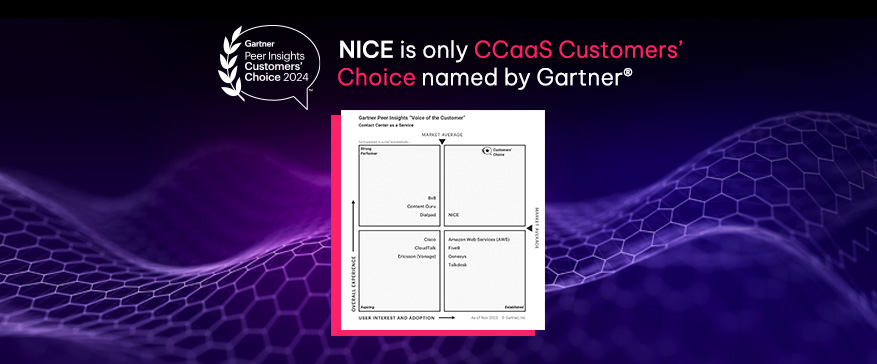- 1. Understanding Contact Center Consolidation
- 2. Reduced Infrastructure and Licensing Costs by Consolidating Contact Centers
- 3. Lower IT and Maintenance Overhead
- 4. Operational Efficiency and Agent Productivity
- 5. Improved Workforce Management and Cost Control
- 6. Economies of Scale
- 7. Overcoming Challenges of Consolidation
- 8. Developing a Consolidation Strategy
- 9. Key Stakeholders and Their Roles
- 10. Faster Time to Innovation and ROI
- 11. Better Customer Experience at a Lower Cost
- Final Thoughts
- Call to Action
1. Understanding Contact Center Consolidation
Contact center consolidation is the strategic process of merging multiple contact centers into a single, unified entity. This can involve bringing together various physical locations, technology platforms, and personnel resources into one streamlined operation. The primary goal of contact center consolidation is to enhance efficiency, reduce costs, and boost customer satisfaction by delivering a more consistent and personalized service experience.Contact center consolidation can take several forms:Physical consolidation: This involves merging multiple contact center sites into a single location, which can significantly reduce overhead costs and improve coordination.
Technology consolidation: This entails unifying multiple technology platforms into a single, cohesive system, eliminating redundancies and simplifying IT management.
Personnel consolidation: This focuses on integrating personnel resources into a single, unified team, which can enhance workforce management and improve service delivery.
2. Reduced Infrastructure and Licensing Costs by Consolidating Contact Centers
One of the most obvious, and impactful, benefits of consolidation is the reduction of redundant technologies. Many enterprises operate multiple legacy systems across different regions, departments, or acquired companies. Each system may require separate software licenses, hardware maintenance, vendor contracts, and support teams. Effective consolidation efforts can streamline processes, cut costs by reducing redundancies, and enhance overall operational efficiency, thereby improving customer service quality.Consolidating these into a single, cloud-based platform drastically reduces overhead:Eliminates duplicate software costs: Pay for one comprehensive solution instead of multiple tools with overlapping capabilities.
Minimizes on-premises hardware: No more managing servers, PBX systems, or outdated telephony gear across multiple sites.
Streamlines vendor management: One contract, one point of support, and consistent SLAs simplify procurement and compliance.
Improves budget predictability: Subscription-based pricing models typical of cloud platforms allow for better cost forecasting.
3. Lower IT and Maintenance Overhead
When your contact centers run on multiple platforms and communication channels, your IT team has to support them all—maintaining different security protocols, integrating various systems, and performing frequent updates or patches. These fragmented environments drain IT resources and increase downtime risks.With a consolidated approach:IT support becomes centralized and simplified
Fewer systems mean fewer vulnerabilities to monitor
Upgrades, patches, and compliance updates can be handled universally
Faster resolution times for technical issues, thanks to standardized infrastructure
4. Operational Efficiency and Agent Productivity
Siloed systems often require agents to toggle between screens, manually input customer information, or repeat the same steps across different tools. This leads to longer handle times, increased error rates, and agent frustration.Consolidation transforms this experience:Unified agent desktop: All channels—voice, chat, email, SMS, and social—are managed in one view, utilizing multiple channels to enhance customer experience.
Integrated knowledge bases: Agents can quickly find accurate, up-to-date information.
Smarter routing: AI and data-driven workflows connect customers to the best-fit agent automatically.
Consistent training and onboarding: New hires ramp faster when there’s one system to learn.
5. Improved Workforce Management and Cost Control
Labor is the largest cost in any contact center—and poor forecasting can lead to overstaffing or missed service level targets. When operations are fragmented, workforce management becomes reactive and inconsistent.By consolidating contact centers:Centralized WFM tools enable holistic forecasting and scheduling
Real-time visibility across sites improves staffing accuracy and enhances customer interactions
Cross-training and virtual agents can be deployed strategically across all locations
Idle time is reduced, while service levels are maintained
6. Economies of Scale
Consolidation allows companies to standardize best practices and processes, which drives efficiency and helps improve service quality by reducing the need to reinvent the wheel in every region or department.Key scale-driven cost benefits include:Volume pricing for licenses, telecom, and cloud usage
Consolidated training programs that reduce onboarding costs
Standardized performance management and QA frameworks
Shared resources, such as supervisory staff, training materials, and reporting templates
7. Overcoming Challenges of Consolidation
Contact center consolidation can be a complex and challenging endeavor, but with the right strategies, these obstacles can be effectively managed. Here are some key tips for overcoming the common challenges associated with consolidation:Communicate clearly and transparently with stakeholders: Effective communication is crucial for a smooth consolidation process. Ensure that all stakeholders, including employees, customers, and vendors, are kept informed and engaged throughout the process. Clear and transparent communication helps build trust and reduces resistance to change.
Develop a comprehensive consolidation plan: A well-thought-out plan is essential for successful consolidation. Outline the goals, objectives, and timelines for the consolidation process, and ensure that all team members understand their roles and responsibilities.
Identify and address potential risks: Proactively identify potential risks and develop strategies to mitigate them. This may involve creating contingency plans, recognizing potential roadblocks, and devising solutions to overcome them.
Provide training and support: Equip employees with the necessary skills and knowledge to thrive in the consolidated environment. Offer training programs and ongoing support to help them adapt to new systems and processes.
Monitor and evaluate progress: Regularly monitor and evaluate the progress of the consolidation process. This allows for timely adjustments and ensures that the project stays on track.
8. Developing a Consolidation Strategy
Creating a robust consolidation strategy is a critical step in the contact center consolidation process. Here are the essential steps to follow:Define the goals and objectives: Clearly articulate the goals and objectives of the consolidation process. Determine the desired outcomes and benefits, such as cost reduction, improved efficiency, and enhanced customer satisfaction.
Assess the current state: Conduct a thorough assessment of the current contact center operations, including technology, personnel, and processes. This helps identify areas for improvement and opportunities for consolidation.
Identify opportunities for consolidation: Look for areas where costs can be reduced, processes can be streamlined, and efficiency can be improved. This may involve consolidating technology platforms, merging physical locations, or integrating personnel resources.
Develop a consolidation plan: Create a detailed consolidation plan that outlines the steps needed to achieve the desired outcomes. Include timelines, milestones, and responsibilities to ensure a structured approach.
Identify and address potential risks: Recognize potential risks and develop strategies to mitigate them. This proactive approach helps prevent disruptions and ensures a smoother consolidation process.
Develop a communication plan: Establish a communication plan to keep stakeholders informed and engaged throughout the consolidation process. Effective communication is key to managing expectations and reducing resistance to change.
9. Key Stakeholders and Their Roles
Successful contact center consolidation involves a range of stakeholders, each playing a crucial role in the process. Here are the key stakeholders and their responsibilities:Executive sponsors: Executive sponsors provide strategic direction and oversight for the consolidation process. They ensure that the project aligns with the organization’s overall goals and objectives.
Project managers: Project managers are responsible for managing the consolidation process. This includes developing the consolidation plan, identifying and addressing potential risks, and ensuring the project is completed on time and within budget.
IT leaders: IT leaders ensure that the technology infrastructure is in place to support the consolidated contact center operations. They oversee the integration of technology platforms and ensure that systems are secure and efficient.
Operations leaders: Operations leaders are responsible for the smooth and efficient running of the consolidated contact center operations. They manage day-to-day activities and ensure that service delivery meets customer expectations.
Employees: Employees provide customer service and support in the consolidated contact center environment. Their role is critical to delivering a high-quality customer experience.
Customers: Customers are the end-users of the contact center services. Their feedback and satisfaction are vital to the success of the consolidation process.
10. Faster Time to Innovation and ROI
Disconnected systems slow innovation. Whether it’s rolling out automation, launching a chatbot, or integrating with your CRM, fragmented platforms delay time-to-value.A consolidated contact center environment removes barriers to innovation:Faster rollout of AI and self-service tools, improving service quality
Easier integration with enterprise systems
Single source of truth for analytics and insights
Accelerated pilot testing and scaling of new initiatives
11. Better Customer Experience at a Lower Cost
Ultimately, the best cost savings come from happy, loyal customers who don’t need to call you repeatedly to get help.Consolidation ensures:Consistent service across all channels and locations
Faster issue resolution
Personalized experiences using centralized customer data







